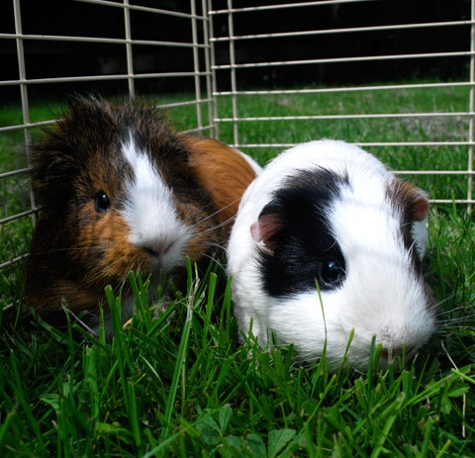
Today, guinea pigs are common pets, but these cute little animals, who originate in South America, were once regarded as exotic, and would have been introduced from the New World to Europe as curiosities.
A forthcoming exhibition on ‘Elizabeth and Her People’ at the National Portrait Gallery in London (10 October 2013 – 5 January 2014) includes a portrait of three children, one clutching what is described as the oldest guinea pig in English art. Read the full story here.
This portrait was painted around 1580. Archaeological evidence, however, may place the earliest guinea pig slightly earlier. In 1554 Sir Thomas Smith acquired the estate of Theydon Mount in Essex, and in 1557 began to reconstruct the main building on the estate, Hill Hall. Sir Thomas was of humble origins but precocious intellect, moving in both academic and court circles; he served as ambassador to France. His building campaigns turned Hill Hall into what one of the finest examples of Tudor architecture in the country, incorporating influences and craftsmanship from the continent. Building works were still in progress on his death in 1577. As well as the architectural style, Sir Thomas’s high standard of living is exemplified by fragments of high quality ceramics and glass recovered from excavations at Hill Hall in 1982-5, under the auspices of English Heritage, and subsequently published with the help of Wessex Archaeology.
And amongst the remains of the Elizabethan building, in a layer dated to 1574-5, were the remains of a guinea pig. This more closely resembles modern domestic short-haired specimens rather than the wild species, but such examples are extremely rare in archaeological contexts in Europe. Elizabeth I is also reputed to have kept a guinea pig, and it is easy to see how Sir Thomas, who kept a high position at court, might acquire such a specimen as a curio for a menagerie.